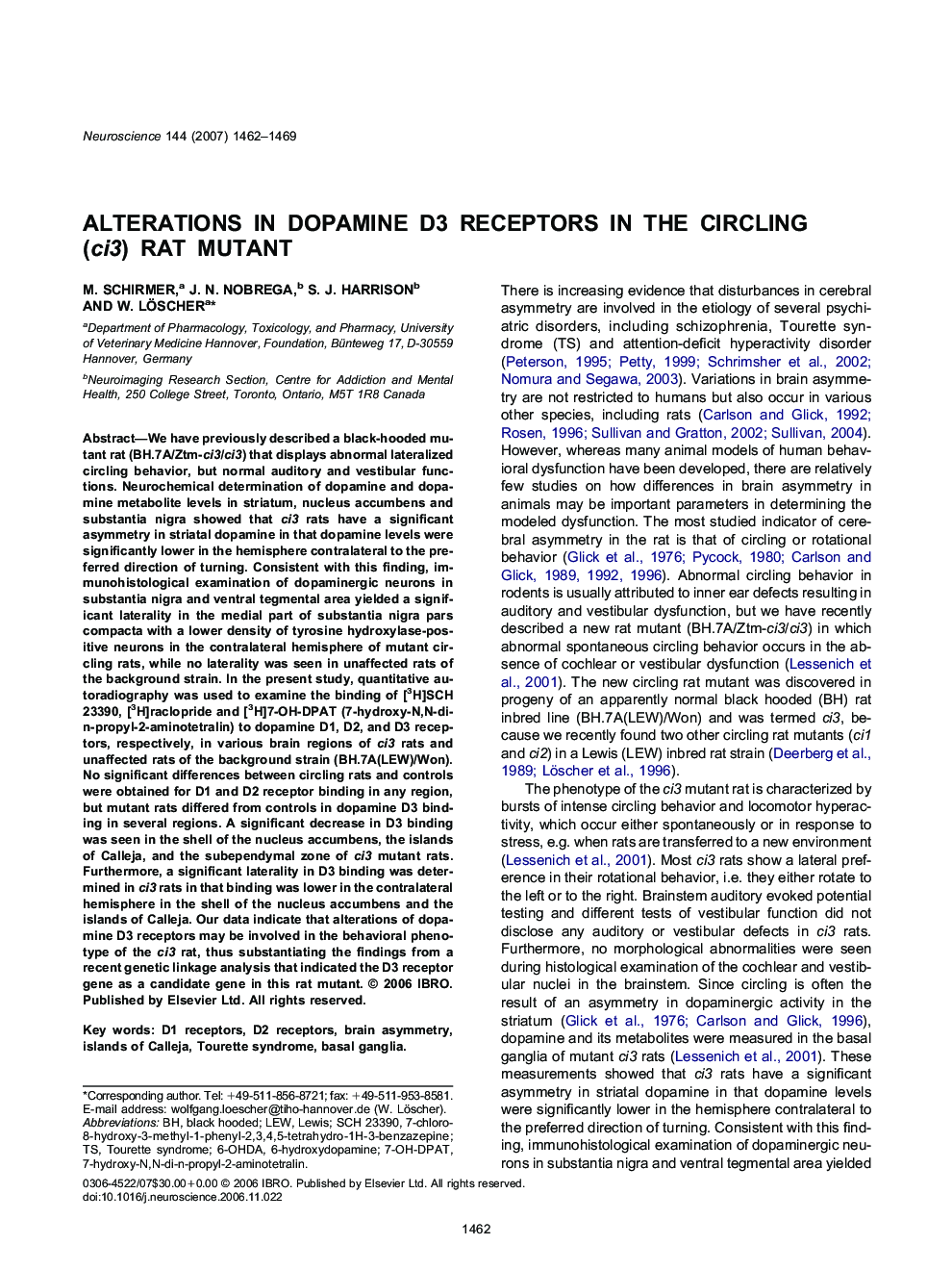| Article ID | Journal | Published Year | Pages | File Type |
|---|---|---|---|---|
| 4341246 | Neuroscience | 2007 | 8 Pages |
We have previously described a black-hooded mutant rat (BH.7A/Ztm-ci3/ci3) that displays abnormal lateralized circling behavior, but normal auditory and vestibular functions. Neurochemical determination of dopamine and dopamine metabolite levels in striatum, nucleus accumbens and substantia nigra showed that ci3 rats have a significant asymmetry in striatal dopamine in that dopamine levels were significantly lower in the hemisphere contralateral to the preferred direction of turning. Consistent with this finding, immunohistological examination of dopaminergic neurons in substantia nigra and ventral tegmental area yielded a significant laterality in the medial part of substantia nigra pars compacta with a lower density of tyrosine hydroxylase-positive neurons in the contralateral hemisphere of mutant circling rats, while no laterality was seen in unaffected rats of the background strain. In the present study, quantitative autoradiography was used to examine the binding of [3H]SCH 23390, [3H]raclopride and [3H]7-OH-DPAT (7-hydroxy-N,N-di-n-propyl-2-aminotetralin) to dopamine D1, D2, and D3 receptors, respectively, in various brain regions of ci3 rats and unaffected rats of the background strain (BH.7A(LEW)/Won). No significant differences between circling rats and controls were obtained for D1 and D2 receptor binding in any region, but mutant rats differed from controls in dopamine D3 binding in several regions. A significant decrease in D3 binding was seen in the shell of the nucleus accumbens, the islands of Calleja, and the subependymal zone of ci3 mutant rats. Furthermore, a significant laterality in D3 binding was determined in ci3 rats in that binding was lower in the contralateral hemisphere in the shell of the nucleus accumbens and the islands of Calleja. Our data indicate that alterations of dopamine D3 receptors may be involved in the behavioral phenotype of the ci3 rat, thus substantiating the findings from a recent genetic linkage analysis that indicated the D3 receptor gene as a candidate gene in this rat mutant.
